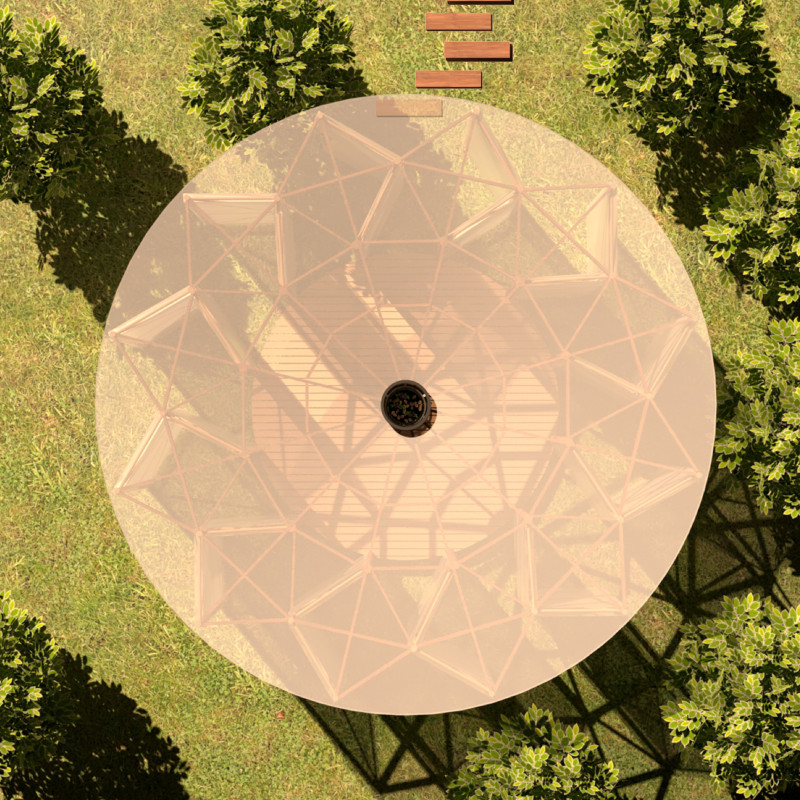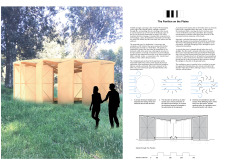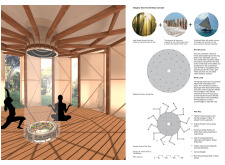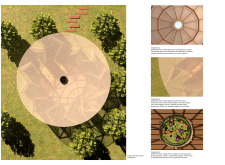5 key facts about this project
The Pavilion on the Plains is an architectural project designed as a meditative space located in the Haraki Plains of New Zealand. The structure is characterized by its circular form, which fosters a sense of unity and connection to its natural surroundings. The primary function of the Pavilion is to provide an environment for meditation and reflection, encouraging visitors to engage with both themselves and the landscape around them.
The design integrates various materials, including timber for structural elements, fabric for external panels, steel for support, and glass for features such as the central altar. The combination of these materials serves to enhance durability while maintaining a warm and inviting atmosphere.
The design emphasizes a seamless interaction with nature. The Pavilion's roof structure features a series of timber purlins that extend from a central ring beam to perimeter columns, creating an airy and open environment. A central skylight is a notable feature, allowing natural light to filter into the space, reinforcing the connection between the interior and the sky above.
The L-shaped panels that define the perimeter of the Pavilion not only provide structural integrity but also serve practical functions by offering shelter from the elements. This design approach ensures a comfortable environment for visitors regardless of weather conditions. The strategic orientation of these panels and their design allows for controlled light entry and maintains privacy when needed.
One unique aspect of this project is the incorporation of an altar for flower essences. This feature supports the Pavilion's role as a space for personal exploration and healing, reflecting an integrated approach to architecture that emphasizes the relationship between built environments and organic processes.
The Pavilion showcases a commitment to sustainability by utilizing locally sourced materials, minimizing impact while enhancing local character. The circular design invites communal interaction, encouraging visitors to come together for both individual and group activities, thus enriching the experience of the Pavilion.
For those interested in exploring the architectural ideas and details behind this project, reviewing the architectural plans, architectural sections, and architectural designs will provide deeper insights into the design methodologies employed. Visit the project presentation for a comprehensive look at this thoughtful architectural endeavor.






















































